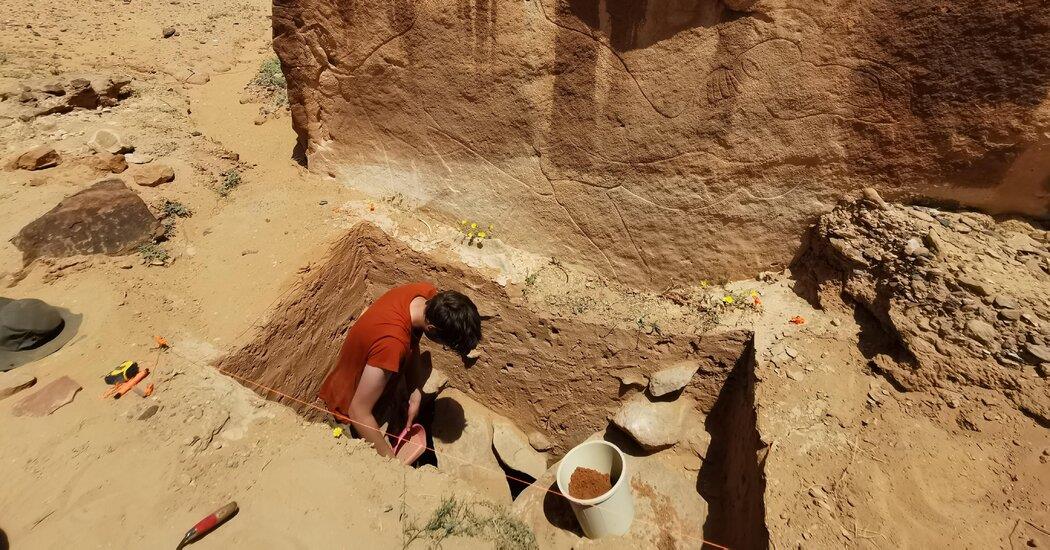
Arabia's Lost Desert Artists Emerge In 12,000-Year-Old Rock Engravings

Archaeologists have uncovered over 170 monumental rock engravings in northern Saudi Arabia that date to between 12,800 and 11,400 years ago, rewriting the timeline of human adaptation in the Arabian Desert. The images-of camels, ibex, gazelles, aurochs and equids-appear in dramatic, life-size scale on high cliff faces along the southern fringe of the Nefud. Beyond their sheer artistry, experts say the carvings likely functioned as visual markers of water sources, travel routes and territorial memory.
A multinational team, operating under Saudi Arabia's Heritage Commission and the Green Arabia Project, documented 60 rock art panels across three sites: Jebel Arnaan, Jebel Mleiha and Jebel Misma. The largest figures stretch three metres in length and more than two metres in height, with some engravings placed up to 39 metres above the ground. The team proposed that the artists climbed narrow ledges to execute the work, often without a vantage point to view the whole design.
Dating of the engravings was indirectly established through luminescence dating of sediment layers beneath the art and a pecking tool discovered in situ, suggesting ages between 12,800–11,400 years. Artefacts including stone tools, arrowheads, hearth remains, and ornamental beads found in association with the panels indicate an earlier and more sustained human presence in the region than previously recognised.
The spatial distribution and placement of the engravings align with palaeohydrological evidence for ephemeral lakes and rivers in the area between 16,000 and 13,000 years ago. The researchers argue that the carvings served to signal or commemorate seasonal water points, acting as landscape waypoints in a harsh desert environment. Some camel images, for example, portray individuals in rut, suggestive of visual markers tied to breeding seasons and water availability.
See also eBPF Foundation Backs Two University Projects with $100K GrantThe significance of this discovery lies partly in the challenge it poses to prior assumptions that human occupation in the interior Arabian deserts was sparse until around 10,000 years ago. The new rock art suggests that hunter-gatherer groups inhabited, traversed, and communicated within this arid landscape centuries earlier than believed. The scale and stylistic consistency of the engravings also indicate that these groups engaged in a sustained, symbolic tradition rather than isolated acts of expression.
Notice an issue? Arabian Post strives to deliver the most accurate and reliable information to its readers. If you believe you have identified an error or inconsistency in this article, please don't hesitate to contact our editorial team at editor[at]thearabianpost[dot]com . We are committed to promptly addressing any concerns and ensuring the highest level of journalistic integrity. Legal Disclaimer:
MENAFN provides the
information “as is” without warranty of any kind. We do not accept
any responsibility or liability for the accuracy, content, images,
videos, licenses, completeness, legality, or reliability of the information
contained in this article. If you have any complaints or copyright
issues related to this article, kindly contact the provider above.
Most popular stories
Market Research

- Versus Trade Launches Master IB Program: Multi-Tier Commission Structure
- Mutuum Finance (MUTM) New Crypto Coin Eyes Next Price Increase As Phase 6 Reaches 50% Sold
- Flexm Recognized As“Highly Commended” In The Regtech Category At The Asia Fintech Awards Singapore 2025
- Tappalpha's Flagship ETF, TSPY, Surpasses $100 Million In AUM
- Stocktwits Launches Stocktoberfest With Graniteshares As Title Partner
- Pendle Grows An Additional $318 Million TVL Just 4 Days After Plasma Launch


















Comments
No comment